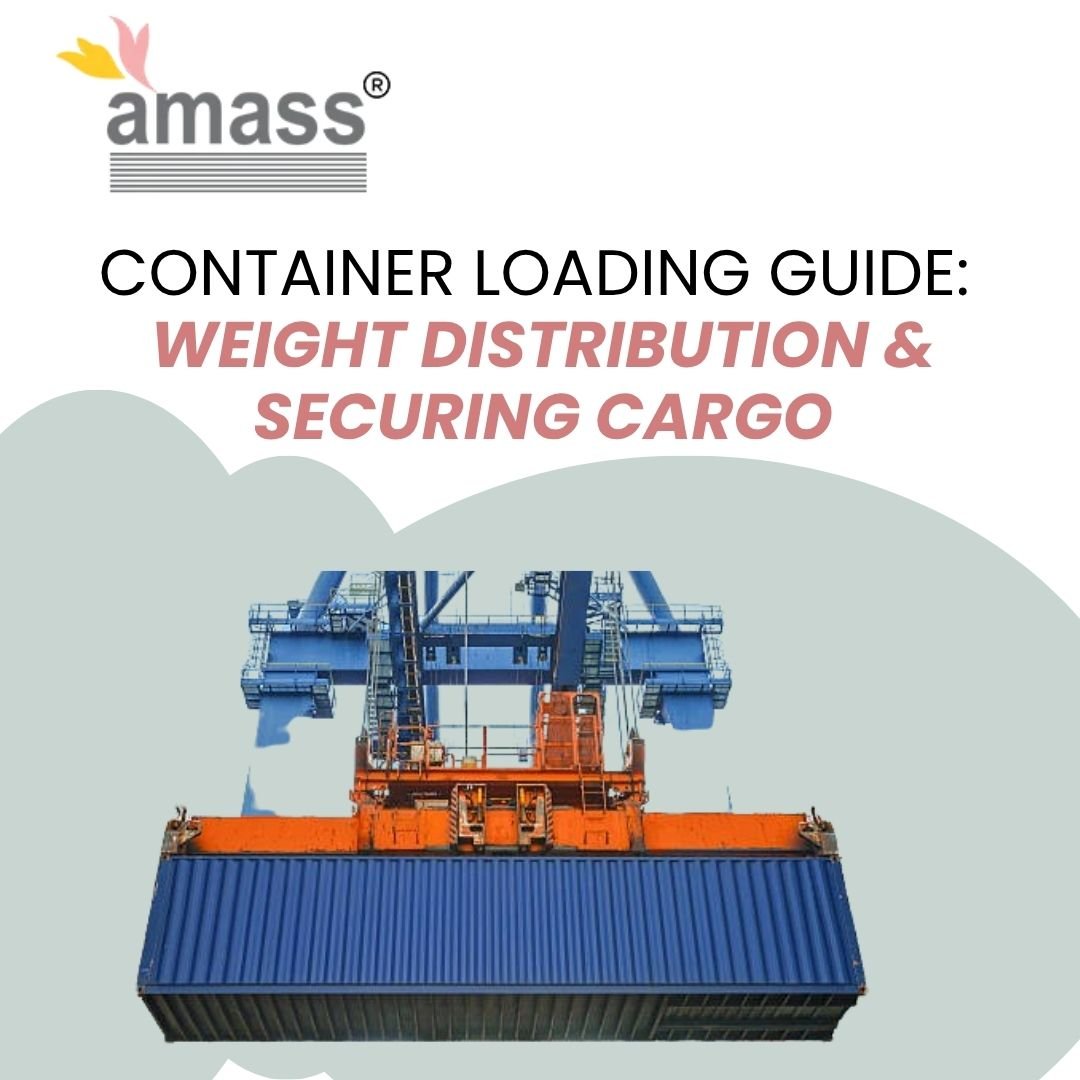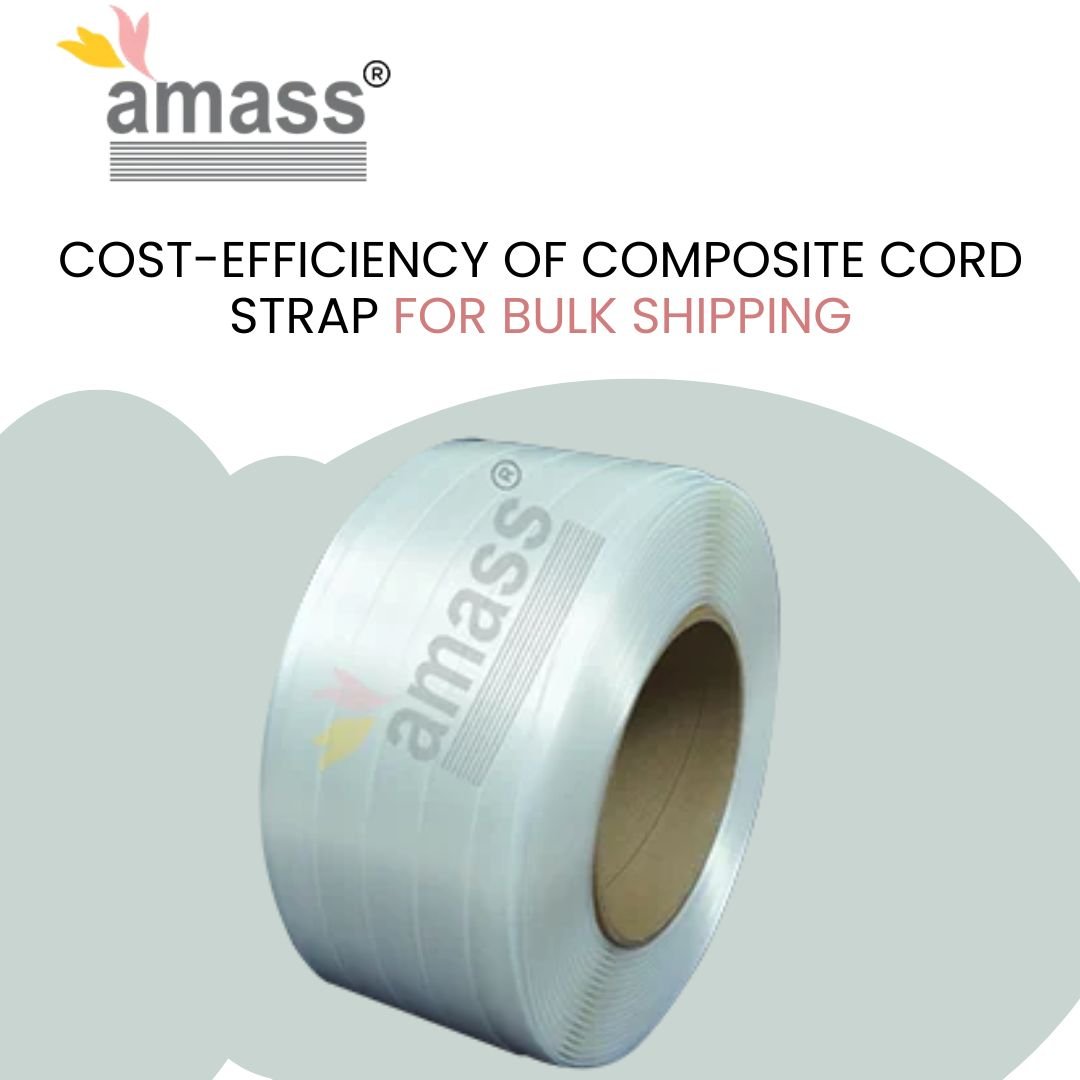Container Loading Guide: Weight Distribution & Securing Cargo

Strapping Solutions for Every Type of Bulk Packaging
May 29, 2025
Best Practices for Implementing Recyclable Packaging Solutions
May 31, 2025In today’s global shipping ecosystem, proper container loading isn’t just about fitting cargo into a box-it’s a precise science that impacts safety, efficiency, and your bottom line. With over 100 million shipping containers transported annually around the globe, mastering the fundamentals of weight distribution and cargo securing techniques has never been more critical for business success. Whether you’re new to international shipping or looking to optimize your existing operations, understanding these principles can mean the difference between consistent deliveries and costly disasters.
Introduction: The Science and Strategy Behind Safe Container Loading
Container loading combines physics, logistics, and regulatory compliance into one critical operation. Each shipping container represents a complex system where forces interact during transport-lateral accelerations during ship movements, vertical forces during lifting operations, and compression forces when containers are stacked. The science of proper loading isn’t merely theoretical; it’s about understanding how mass, force, and motion interact within a confined space under dynamic conditions.
When containers are shipped by sea, they encounter rolling motions of up to 30°, pitching of 5-7°, and heaving accelerations that can create forces up to 2G-double the normal gravitational force. On roads, sudden braking can produce horizontal forces of 0.8G. These forces transform improperly secured cargo into dangerous projectiles, causing cargo damage, container failures, and in worst cases, loss of life.
Why Weight Distribution Matters: Efficiency, Safety, and Compliance?
Improper weight distribution creates a cascade of costly problems throughout the supply chain. On the efficiency front, excess or poorly distributed weight increases fuel consumption dramatically. Studies show approximately 7% reduction in fuel consumption can be achieved with just a 10% reduction in vehicle weight. This translates to significant cost savings over thousands of transport miles.
From a safety perspective, incorrect weight distribution causes severe accidents that could entirely be prevented. During claims assessments, shipping experts regularly encounter containers that have tipped over during transport, cargo that has broken free and damaged container walls, and shipments that have crushed other goods-all preventable through proper loading practices.
Compliance requirements add another critical dimension. Since July 2016, the International Maritime Organization has enforced Safety of Life at Sea (SOLAS) amendments requiring verified container weights as a condition for loading onto ships. Failure to comply means your containers simply won’t ship, creating costly delays and potential contract breaches.
Understanding Container Structures: Strength Points and Load Limits
Container Weight Capacities
The structure of a shipping container incorporates specific design elements to handle tremendous weight while providing secure mounting points for cargo restraint. Standard ISO containers have carefully calculated maximum load capacities: a 20-ft dry cargo container has a maximum gross mass of 24,000 kg, while a 40-ft container (including high-cube variants) can handle up to 30,480 kg. After accounting for the container’s own weight (tare mass), this translates to maximum payloads of approximately 22,000 kg for 20-ft and 27,000 kg for 40-ft containers.
Securing Point Strengths
The critical weak links in most container cargo systems are the securing points themselves. Each standard ISO container features lashing points at both floor and ceiling levels with specific Maximum Securing Load (MSL) ratings. The lower securing points have an MSL of at least 1,000 daN, while upper securing points are rated at a minimum of 500 daN. This distinction is vital-regardless of how robust your cargo restraint equipment might be, you cannot exceed these structural limits without risking catastrophic failure.
Types of Cargo and Their Specific Loading Requirements
Different cargo types present unique challenges that require specialized loading approaches:
High Center of Gravity Items
Tall items with small footprints (like machinery or stacked goods) are inherently unstable and prone to tipping. These require either support from adjacent packages in a tight stow or sufficient space for direct lashings to be applied properly.
Heavy Concentrated Loads
Items exceeding 25% of the CTU’s payload capacity (such as industrial machinery, marble blocks, or steel coils) must be positioned carefully with their weight distributed onto the container’s major structural components, not concentrated on the center of the floor.
Wheeled Cargo and Cylindrical Objects
Vehicles, drums, coils, and tubes present special challenges due to their tendency to roll. These should be supported on beams placed on the container’s structural members, with properly sized chocks against curved surfaces. Critical detail: these chocks should be affixed to the supporting beams, never nailed directly to the container floor.
Key Principles of Proper Weight Distribution Inside Containers
The foundation of effective container loading rests on several critical principles:
- Center of Gravity Positioning: The cargo’s center of gravity should be as close as possible to the container’s midpoint, with a tolerance of ±5%. A practical guideline is to distribute 60% of the cargo weight over 50% of the container’s length.
- Prevent Movement in All Directions: Use locking, blocking or lashing, or combinations of these methods, to prevent cargo from sliding and tipping in any direction during transport.
- Vertical Stacking Strategy: Never build irregular layers of packages. Irregular stacks without proper blocking and securing invariably result in damaged cargo during transit.
- Weight Hierarchy: Always place heavier goods below lighter items, never the reverse.
- Load Distribution: Spread heavy cargo across the floor area rather than concentrating weight in specific zones.
Securing Cargo: Essential Techniques and Modern Tools
Effective Restraint Methods
Modern cargo securing relies on three primary techniques, often used in combination:
- Blocking: Using solid barriers (like dunnage or load bars) to prevent horizontal movement
- Bracing: Reinforcing cargo against container walls or other cargo
- Lashing: Using straps, chains, or wire rope to secure cargo to anchor points
The Mathematics of Securing
Proper cargo securing isn’t guesswork-it’s calculated precision. The total securing solution is only as strong as its weakest link, typically one of the securing points. This critical fact is often overlooked when companies claim their vertical lashing solutions offer MSLs of 4,000 daN while using two upper and two lower securing points. In reality, the maximum safe load would be limited to 2,000 daN due to the 500 daN limitation of the upper securing points.
Technology Advancements
The industry has embraced sophisticated tools like DNV’s StowLash3D software, which uses finite element analysis to calculate forces acting upon containers and lashing equipment with unprecedented accuracy. This 3D container model accounts for torsional forces and captures loads on lashing rods induced by hatch cover deformation or dynamic forces from twistlock clearance.
Common Mistakes in Container Loading-and How to Avoid Them
Even experienced shippers make these critical errors that compromise cargo safety:
| Common Mistake | Potential Consequences | Prevention Strategy |
| Ignoring container weight limits | Structural failure, regulatory violations | Verify gross weight before loading |
| Concentrated loading patterns | Floor damage, container failure | Distribute heavy items across floor area |
| Inadequate securing of high CG items | Cargo toppling, damage to other goods | Use proper blocking and lashing techniques |
| Misunderstanding securing point limits | Restraint system failure during transport | Calculate based on weakest component in system |
| Poor documentation of weight distribution | Delays, re-work, potential rejection | Document VGM according to SOLAS requirements |
The consequences of these errors aren’t merely theoretical-they result in real financial losses, damaged reputations, and potentially fatal accidents. By understanding and avoiding these common pitfalls, shippers can significantly reduce risk and improve outcomes.
Advanced Methods: Dynamic Load Management and Smart Load Sensors
The frontier of container loading science extends beyond static calculations to dynamic load management systems. Modern container vessels now employ sophisticated calculation methods using finite elements that have been proven through full-scale tests with actual containers.
These state-of-the-art systems allow for:
- Direct calculation of twistlock and lashing forces
- Increased flexibility of stack weight distribution
- Optimized stack weights
- Suitability for optimizing lashing systems during the design phase7
The integration of smart sensors with real-time monitoring capabilities allows operators to detect shifting loads, excessive forces, or environmental conditions that might compromise cargo security, providing alerts before damage occurs.
International Standards and Best Practices for Cargo Safety
The global nature of shipping necessitates standardized approaches to container loading safety. Key regulations include:
- SOLAS VGM Requirements: Since July 2016, shippers must provide verified gross mass data for all containers as a condition for vessel loading.
- CTU Code: The IMO/ILO/UNECE Code of Practice for Packing of Cargo Transport Units provides comprehensive guidelines for safe packing practices.
- ISO Standards: ISO containers must meet specific structural requirements to ensure intermodal compatibility and safety.
Compliance isn’t merely about avoiding fines-it’s about ensuring predictable outcomes throughout the supply chain. By following these established standards, shippers create consistency that benefits all stakeholders in the logistical ecosystem.
Conclusion: Mastering the Art of Balanced, Secure, and Reliable Shipping
The science of proper container loading represents a perfect intersection of physics, logistics, and regulatory knowledge. By understanding and applying the principles of weight distribution and cargo securing, you not only protect your shipments but optimize fuel efficiency, reduce environmental impact, and enhance your competitive advantage in the global marketplace.
Remember that container loading isn’t just about filling space-it’s about creating a stable, secure environment that can withstand the dynamic forces encountered during multimodal transport. Master these principles, and you’ll transform what many see as a logistical challenge into a strategic advantage for your growing business.




